| CANT Z.508 | |
|---|---|
 | |
| Role | Heavy bomber flying boat |
| Manufacturer | Cantieri Aeronautici e Navali Triestini |
| First flight | 1936 |
| Number built | 3 |
The CANT Z.508 was a three-engine Italian flying boat developed from the CANT Z.501 for use as a heavy bomber.
| CANT Z.508 | |
|---|---|
 | |
| Role | Heavy bomber flying boat |
| Manufacturer | Cantieri Aeronautici e Navali Triestini |
| First flight | 1936 |
| Number built | 3 |
The CANT Z.508 was a three-engine Italian flying boat developed from the CANT Z.501 for use as a heavy bomber.
Designed as a scaled-up three-engine version of the single-engine Z.501 for use as a heavy bomber. The aircraft was not put into production although the prototype set several world records for its class, including the lifting of a 1,000 kg (2,200 lb) load. [1]
Data from The Illustrated Encyclopedia of Aircraft, [2] Italian Civil and Military aircraft 1930–1945 [1]
General characteristics
Performance
Related lists
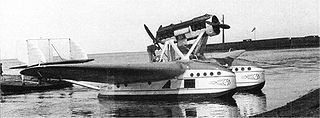
The Savoia-Marchetti S.55 was a double-hulled flying boat produced in Italy, beginning in 1924. Shortly after its introduction, it began setting records for speed, payload, altitude and range.
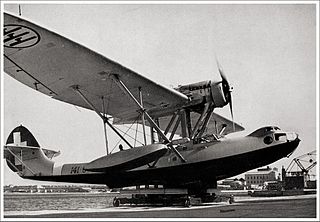
The CANT Z.501 Gabbiano was a high-wing central-hull flying boat, with two outboard floats. It was powered by a single engine installed in the middle of the main-plane and had a crew of 4–5 men. It served with the Italian Regia Aeronautica during World War II, as a reconnaissance aeroplane. During its debut in 1934, it set a world distance record. It was obsolete by 1940, but was still used throughout World War II, suffering many losses. A few remained in service until 1949.

The CANT Z.506 Airone was a triple-engine floatplane produced by CANT from 1935. It served as a transport and postal aircraft with the Italian airline "Ala Littoria". It established 10 world records in 1936 and another 10 in 1937. During World War II it was used as a reconnaissance aircraft, bomber and air-sea rescue plane, by the Italian Regia Aeronautica and Regia Marina, Aeronautica Cobelligerante del Sud, Aeronautica Nazionale Repubblicana and the Luftwaffe. The military version revealed itself to be one of the best floatplanes ever built. Despite its wooden structure it was able to operate in very rough seas. A number of Z.506S air-sea rescue aircraft remained in service until 1959.

The CANT Z.511 was a four-engine long-range seaplane designed by Filippo Zappata of the "Cantieri Riuniti dell'Adriatico" (CRDA) company. Originally designed for the Central and South Atlantic passenger routes, it was later adapted as a military transport and special raider.

The Meridionali Ro.37 Lince was a two-seater Italian reconnaissance biplane, a product of the Industrie Meccaniche Aeronautiche Meridionali (IMAM) company. It appeared in 1934 and had a composite structure of wood and metal. The aeroplane first saw operational duty in the Second Italo-Ethiopian War (1935–1936) and Spanish Civil War (1936–1939), and during the Second World War it saw duty on almost all fronts, except for Russia and the English Channel. It followed the Ro.1 as the main reconnaissance aircraft for the Italian Army.

The Savoia-Marchetti SM.78 was an Italian bomber/reconnaissance biplane flying boat of the early 1930s.

The Savoia-Marchetti SM.62 was an Italian single-engine maritime patrol flying boat produced from 1926. It served with the Regia Aeronautica and with a number of foreign users, and was licence-produced in Spain and the Soviet Union. Some of the Spanish aircraft were still in service during the Spanish Civil War

The Loire 70 was a 1930s French long-range maritime reconnaissance flying boat produced by Loire Aviation.

The CANT Z.509 was a three-engine Italian floatplane developed from the Z.506A for use as a mailplane.
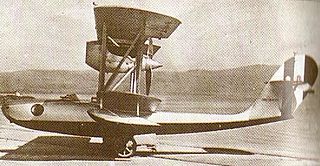
The CANT 25 was an Italian shipboard single-seat biplane flying boat fighter that entered service with the Regia Aeronautica in 1931.

The CANT 6 was a flying boat designed for Italian military service in 1925. It was a large biplane of conventional design with three engines mounted in nacelles within the interplane gap. Only a single example was produced in its original military configuration, followed by two further aircraft redesigned as 11-seat passenger aircraft. One of these was retained by CANT, but the other entered airline service with Società Italiana Servizi Aerei.
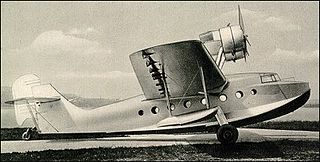
The Macchi M.C.94 was a 1930s Italian commercial flying boat built by Macchi.

The Savoia-Marchetti S.59 was a 1920s Italian reconnaissance/bomber flying boat designed and built by Savoia-Marchetti for the Regia Aeronautica.

The Macchi M.71 was an Italian flying boat fighter of the 1930s designed and manufactured by Macchi.

The Caproni Ca.90 was a prototype Italian heavy bomber designed and built by Caproni. When it first flew in 1929 it was the largest aircraft in the world.

The CANT Z.515 was a twin engine monoplane floatplane designed and built for maritime reconnaissance in Italy at the start of World War II. It did not go into service.
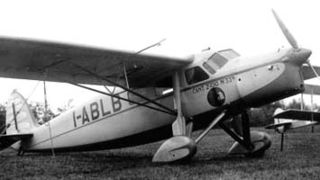
The CANT Z.1010 was a single engine, five seat Italian passenger aircraft flown in the mid-1930s. Only one was built.
The CANT Z.504 was a prototype reconnaissance biplane flying boat made by CANT in the 1930s.

The CANT Z.505 was a prototype trimotor transport floatplane built by CANT in the 1930s.
The Macchi M.C.77 was a reconnaissance bomber flying boat built by Macchi in the thirties and remained at the prototype stage.
| Wikimedia Commons has media related to CANT Z.508 . |